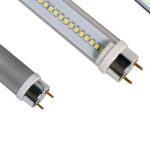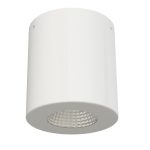Outdoor Lighting Made Easy: Choosing the Right Wattage for LED Bulbs
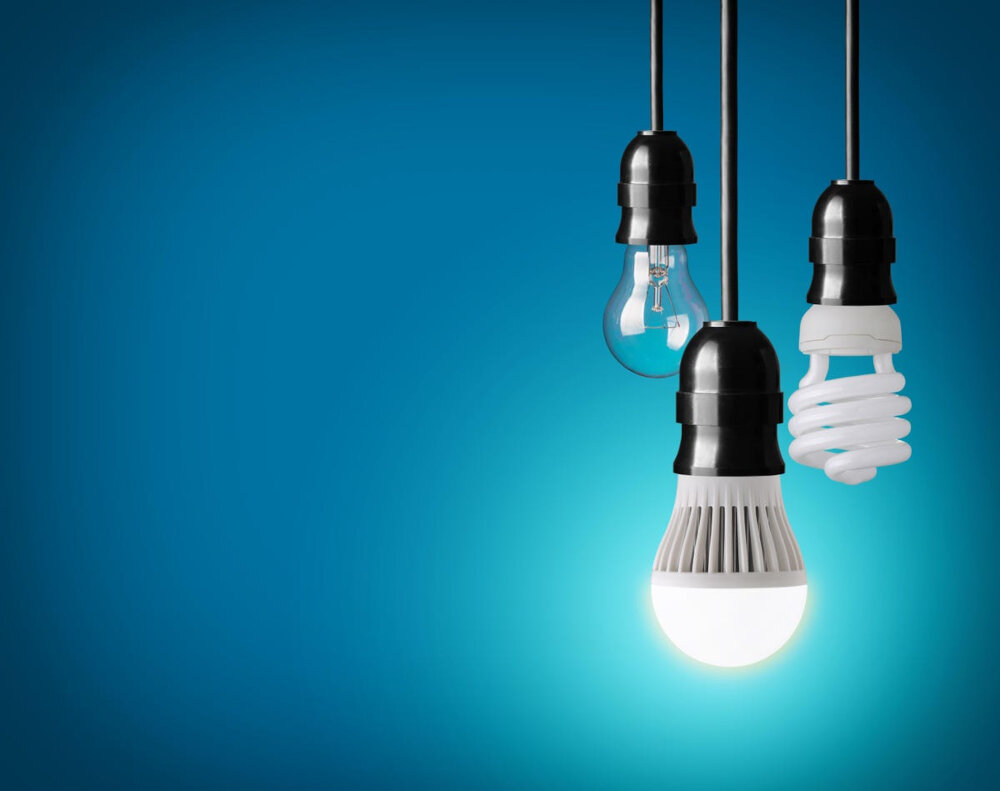
Lighting is an essential factor in any outdoor space. It not only enhances the aesthetic appeal of the surroundings but also plays a vital role in ensuring safety and security. The market is flooded with a plethora of lighting options, and LED bulbs have emerged as the go-to choice for many homeowners. Not only are they energy-efficient, but they also last longer than traditional bulbs. However, choosing the right wattage for LED bulbs can be quite challenging, especially for the uninitiated. In this guide, we will help you navigate through the process of selecting the right wattage for your outdoor lighting needs. The wattage of a bulb is the amount of energy it consumes. The higher the wattage, the brighter the light. However, when it comes to outdoor lighting, brighter is not always better. Too much light can be blinding and create harsh shadows, making it difficult to see. On the other hand, too little light can be a safety hazard, causing people to trip or fall. Choosing the right wattage is crucial, and LED bulbs offer a wide range of options to suit your needs. We will explore the different factors that you need to consider when selecting the right wattage for your LED bulbs in the following sections.
Outdoor lighting is an essential aspect of any home or business. It serves several important purposes, starting with providing safety and security for the property. Illuminating the outside of your home or business can deter potential intruders and prevent accidents by making it easier to navigate walkways and staircases. Outdoor lighting also enhances the aesthetic appeal of a property by highlighting its unique features, such as architectural details, landscaping, and outdoor decor. Moreover, outdoor lighting creates a warm and welcoming atmosphere for guests and visitors, making them feel more comfortable and secure. Therefore, selecting the right wattage for LED bulbs is crucial to ensure that your outdoor lighting is both functional and visually appealing.
LED bulbs are becoming increasingly popular as an energy-efficient lighting option for both indoor and outdoor settings. Not only do they consume significantly less energy than traditional incandescent bulbs, but they also emit less heat and have a longer lifespan. LED bulbs also come in a variety of wattages, making it easy to choose the right level of brightness for your outdoor lighting needs. Additionally, they are available in a variety of colors and can be used to create a wide range of lighting effects, from warm and inviting to cool and modern. Overall, LED bulbs are an excellent choice for anyone looking to reduce their energy consumption and save money on their electricity bills while still enjoying high-quality outdoor lighting.
Selecting the appropriate wattage for LED bulbs is crucial, especially when it comes to outdoor lighting. The wattage dictates the brightness of the bulb, and the right wattage can transform the outdoor space into a warm, welcoming environment. Too much wattage can be overwhelming, while too little can leave the area feeling dull and uninviting. A higher wattage is best suited for outdoor areas where more light is needed, such as entryways and walkways, while lower wattage is ideal for creating a cozy atmosphere in covered patios or outdoor living areas. Additionally, choosing the right wattage can also lead to significant energy savings and reduce the overall cost of outdoor lighting. It is essential to consider the space’s size, purpose, and the desired ambiance when selecting the appropriate wattage for LED bulbs.
Understanding LED Bulbs
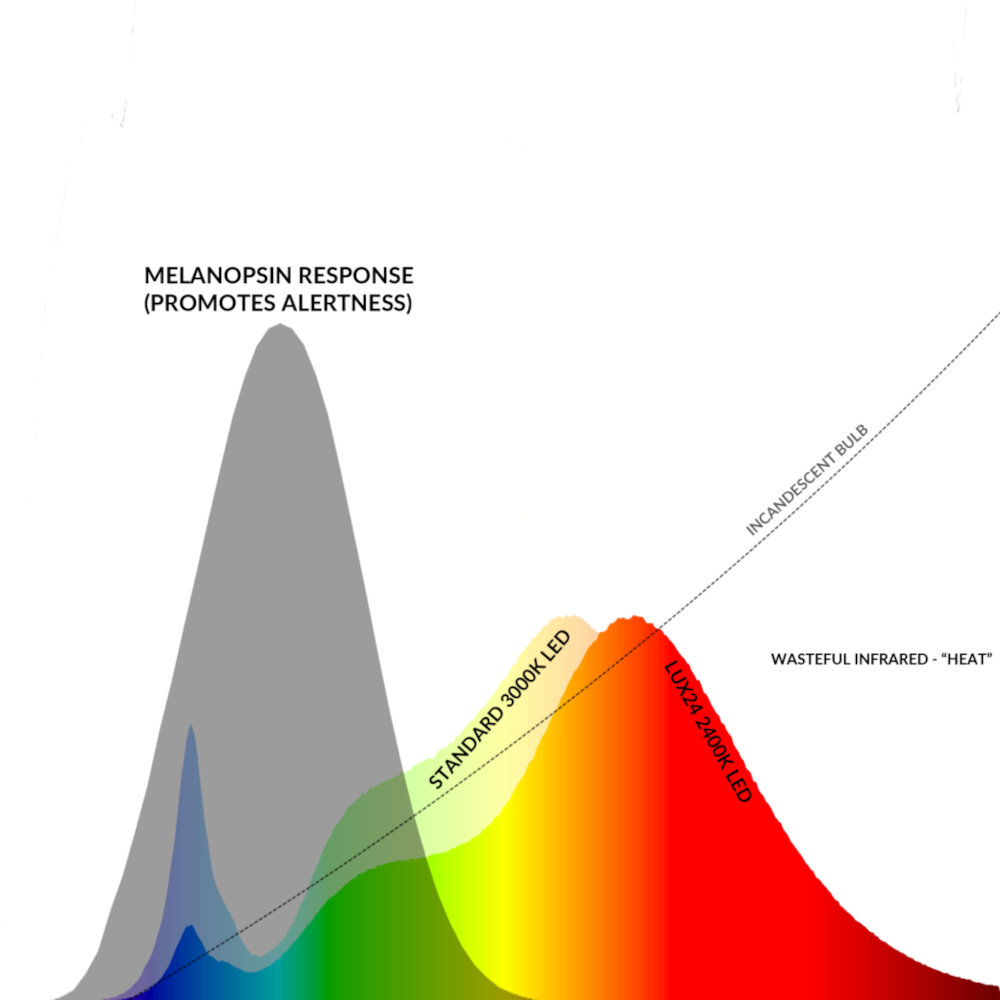
LED bulbs are a popular choice for outdoor lighting fixtures due to their energy efficiency and longevity. Understanding the technical aspects of LED bulbs can help you choose the right wattage for your outdoor lighting needs. LED bulbs use less energy than traditional incandescent bulbs, making them a more sustainable choice for outdoor lighting. They also last longer, reducing the need for frequent replacement and decreasing maintenance costs. Additionally, LED bulbs emit less heat than incandescent bulbs, making them a safer option for outdoor fixtures. When selecting the wattage for your LED bulbs, it is important to consider the brightness level you desire. The brightness of LED bulbs is measured in lumens, rather than watts, as watts only indicate the amount of energy consumed. The higher the lumens, the brighter the bulb will be. For outdoor lighting, a range of 500-1000 lumens is typically ideal, depending on the specific application. Additionally, consider the color temperature of the bulb, which is measured in Kelvin. A lower Kelvin number, such as 2700K, will emit a warm, yellowish light, while a higher Kelvin number, such as 5000K, will emit a cool, bluish light. Understanding these technical aspects of LED bulbs can help you choose the right wattage and color temperature for your outdoor lighting needs.
LED bulbs work by using a semiconductor material to convert electricity into light. The semiconductor is made up of layers of materials that have different levels of conductivity, which allows for the flow of electrons. When a voltage is applied to the semiconductor, the electrons move from the negatively charged layer to the positively charged layer, releasing energy in the form of light. Unlike traditional incandescent bulbs, which produce light by heating a filament, LED bulbs are much more efficient, using only a fraction of the energy to produce the same amount of light. This makes them an excellent choice for outdoor lighting, where energy efficiency and durability are important factors to consider.
LED bulbs are a more efficient and cost-effective alternative to traditional bulbs. They use less energy and last longer, making them an environmentally conscious choice for outdoor lighting. LED bulbs also emit a brighter and more focused light, making them ideal for illuminating specific areas such as walkways or outdoor seating areas. Additionally, LED bulbs are more durable and resistant to damage from weather and other outdoor elements, making them a reliable and long-lasting choice for outdoor lighting. With their many advantages, LED bulbs are quickly becoming the preferred choice for outdoor lighting solutions.
There are various types of LED bulbs available in the market. One common type is the standard LED bulb, which is a direct replacement for the traditional incandescent bulb. Another type is the LED floodlight bulb, which is typically used for outdoor lighting and provides a wider beam angle. Dimmable LED bulbs are also available, which allow users to adjust the brightness according to their preferences. Additionally, there are LED bulbs that are specifically designed for use in ceiling fans or enclosed fixtures, as well as LED tubes for use in fluorescent fixtures. It is important to choose the right type of LED bulb for your needs to ensure optimal performance and energy efficiency.
Wattage and Brightness
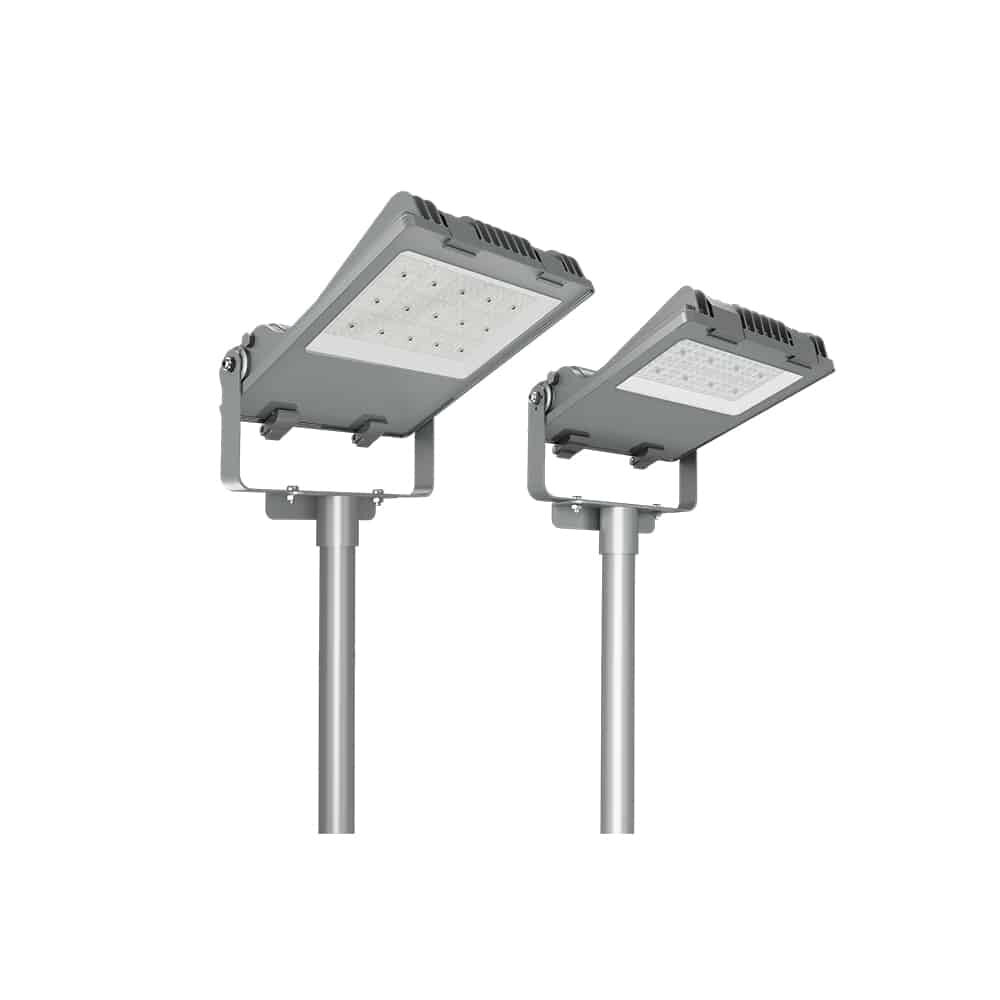
Wattage and brightness are two essential factors to consider when choosing LED bulbs for outdoor lighting. Wattage represents the amount of energy consumed by a bulb, while brightness is the intensity of light it produces. LED bulbs are highly efficient in terms of wattage and brightness, making them a popular choice for outdoor lighting. When selecting the wattage of an LED bulb, it is essential to consider the lighting needs of the outdoor space. A higher wattage bulb will provide more light, but it will also consume more energy. Therefore, it is crucial to balance the need for sufficient illumination with energy efficiency. LED bulbs are available in a range of wattages, from 2 watts to 100 watts or more. For outdoor lighting, a wattage of 10-12 watts is typically sufficient for most applications, such as illuminating a garden or walkway. However, for more significant areas, such as a driveway or patio, a higher wattage may be necessary to ensure adequate lighting. Brightness is also an essential factor to consider when choosing LED bulbs for outdoor lighting. The brightness of an LED bulb is measured in lumens, with a higher number indicating a brighter bulb. LED bulbs are available in a range of brightness levels, from 200 lumens to 10,000 lumens or more. For outdoor lighting, a brightness level of 400-600 lumens is generally sufficient for most applications. However, for areas that require more significant illumination, such as a security light, a higher brightness level may be necessary to ensure the area is adequately lit. By considering both wattage and brightness when selecting LED bulbs for outdoor lighting, you can ensure that you choose the right bulbs that meet your lighting needs while also being energy-efficient.
Wattage refers to the amount of power consumed by a light bulb. The higher the wattage, the more electricity the bulb uses, and the more light it produces. However, when it comes to LED bulbs, wattage is not the only factor that determines brightness. The lumens (lm) rating is also important. Lumens refer to the amount of visible light emitted by a light source. Therefore, a 10-watt LED bulb with a 700lm rating can produce the same amount of brightness as a 60-watt incandescent bulb. It is essential to choose the appropriate wattage and lumens rating for outdoor lighting to achieve the desired brightness while saving energy and reducing costs.
Choosing the right wattage for outdoor lighting is crucial to achieve the desired lighting effect and save energy costs. To determine the appropriate wattage, consider the size of the outdoor space, the intended purpose of the lighting, and the brightness level you want to achieve. For example, if you want to illuminate a small patio or walkway, a lower wattage of around 4-6 watts may be sufficient. However, if you’re looking to brighten up a larger area or enhance security, a higher wattage of 10-20 watts may be necessary. It’s also important to consider the type of LED bulb being used, as different bulbs can have different wattage equivalents. By carefully evaluating the outdoor space and choosing the right wattage, you can create a beautiful, energy-efficient outdoor lighting design.
The choice of wattage for LED bulbs largely depends on several factors. Firstly, the purpose of the outdoor lighting should be taken into consideration, as different activities require different levels of illumination. Secondly, the size of the area to be illuminated should be factored in since larger areas require higher wattage to provide adequate brightness. Thirdly, the type of fixture and bulb being used should be considered as some fixtures require specific wattages to function optimally. Additionally, the amount of ambient light in the area should be taken into account, as higher levels of ambient light may require lower wattage to achieve the desired brightness. Lastly, energy efficiency and cost may also influence the choice of wattage, as higher wattage bulbs consume more energy and may cost more in the long run.
Choosing the Right Wattage for Different Outdoor Lighting Applications

When it comes to outdoor lighting, choosing the right wattage is crucial. Too low of a wattage and your lights won’t provide enough illumination for safety and security. Too high of a wattage and you’ll waste energy and money. Fortunately, LED bulbs make it easy to find the perfect wattage for your needs. For general outdoor lighting, such as pathway lighting or accent lighting, a wattage of 4-8 watts is usually sufficient. This will provide enough illumination to guide you safely along the path, highlight landscaping features, and create a warm and inviting atmosphere. For more specific applications, such as security lighting or task lighting, you may need a higher wattage. Security lighting should be bright enough to deter intruders, so a wattage of 12-16 watts may be necessary. Task lighting, such as for outdoor cooking or reading, will require a higher wattage as well, typically in the range of 20-30 watts. By choosing the right wattage for each application, you can ensure that your outdoor lighting is both effective and efficient.
When selecting the right wattage for pathway lighting, there are several guidelines to keep in mind. First, consider the size and length of the pathway, as well as the desired level of illumination. For shorter paths, lower wattage bulbs may be sufficient, while longer paths may require higher wattage bulbs to provide adequate lighting. Additionally, consider the surrounding environment and the effect you want to achieve. Soft, subtle lighting may be appropriate for a garden pathway, while a more dramatic effect may be desired for a commercial or public space. Finally, be sure to choose LED bulbs, as they are energy-efficient and long-lasting, making them a cost-effective option for outdoor lighting. By keeping these guidelines in mind, you can select the right wattage for your pathway lighting needs and create a welcoming and safe outdoor environment.
When selecting the right wattage for security lighting, it is important to consider the size and location of the area you want to illuminate. A higher wattage bulb may be necessary for larger areas, while a lower wattage bulb may suffice for smaller spaces. It is also important to consider the purpose of the lighting, as a brighter light may be necessary for security purposes, while a softer light may be more appropriate for ambiance. Additionally, it is important to select LED bulbs, which are more energy-efficient and longer-lasting than traditional incandescent bulbs. Overall, taking the time to carefully consider your lighting needs and selecting the appropriate wattage and type of bulb can help ensure that your outdoor space is well-lit and secure.
When it comes to selecting the appropriate wattage for accent lighting, there are a few guidelines to keep in mind. First and foremost, consider the area or object that you want to highlight with the light. A general rule of thumb is to use 20 to 30 watts for small objects and up to 100 watts for larger areas or objects. Next, think about the overall ambiance you want to create – warmer, softer light is better for creating a cozy atmosphere, while brighter, cooler light is ideal for highlighting architectural features or landscaping. Additionally, take into account the type of LED bulb you are using – some bulbs are designed to emit a brighter light with lower wattage, while others may require a higher wattage to achieve the same effect. By considering these factors, you can select the right wattage for your accent lighting needs and create a stunning outdoor space.
Other Considerations When Choosing LED Bulbs

While wattage is an important factor when choosing LED bulbs for outdoor lighting, there are other considerations that should also be taken into account. One of these is color temperature. LED bulbs come in varying color temperatures, which can affect the ambiance of your outdoor space. For example, bulbs with a warmer color temperature (around 2700K) can create a cozy, inviting atmosphere, while bulbs with a cooler color temperature (around 5000K) can provide a brighter, more energizing feel. It’s important to consider the mood you want to create in your outdoor space and choose a color temperature that aligns with that vision. Another consideration when choosing LED bulbs for outdoor lighting is the bulb’s beam angle. The beam angle refers to the spread of light emitted from the bulb. A narrower beam angle (around 20-30 degrees) is ideal for highlighting specific features, such as trees or statues, while a wider beam angle (around 60-120 degrees) is better for providing general illumination to a larger area. It’s important to take into account the size and layout of your outdoor space when choosing the beam angle of your LED bulbs, to ensure that the lighting is effective and visually appealing. By taking these additional factors into account, you can choose LED bulbs that not only provide the right wattage for your outdoor lighting needs, but also create the perfect ambiance and effectively illuminate your outdoor space.
Color temperature is a crucial factor to consider when choosing outdoor lighting as it affects the ambiance of the space. Color temperature is measured in Kelvins (K), and it refers to the color appearance of the light emitted by a bulb. Bulbs with a lower Kelvin rating produce warm, yellowish light, while those with a higher rating produce cool, bluish light. Warm light creates a cozy and inviting atmosphere, making it ideal for intimate gatherings, while cool light creates a more refreshing and energizing ambiance, perfect for outdoor activities. It is essential to select the right color temperature to achieve the desired mood and ambiance for your outdoor space.
Lumens are a unit of measurement that determine the amount of visible light emitted by a source, such as an LED bulb. In outdoor lighting, lumens are an important factor to consider when choosing the right wattage for LED bulbs. A higher number of lumens means a brighter light output. For example, a 600 lumen bulb will emit more light than a 400 lumen bulb. However, it’s essential to match the lumens to the specific outdoor lighting needs. Using bulbs with too few lumens will result in inadequate lighting, while using bulbs with too many lumens can cause glare and light pollution, which can negatively impact the environment and the surrounding community.
Color Rendering Index (CRI) is a metric used to measure how well a light source can present colors accurately compared to natural light. The CRI scale ranges from 0 to 100, with a higher number indicating a better color rendering ability. The importance of CRI lies in the fact that it affects how we perceive colors in different environments, especially in outdoor spaces. Accurate color reproduction is crucial for activities like outdoor dining, art displays, and landscaping where the true colors of materials and objects are important. Choosing LED bulbs with high CRI values will ensure that colors in outdoor spaces are represented correctly, enhancing the overall visual experience.
Choosing the right wattage for LED bulbs in outdoor lighting is crucial for several reasons. Firstly, it affects the overall energy consumption and efficiency of the lighting system, which can have a significant impact on electricity bills and the environment. Secondly, it can affect the brightness and effectiveness of the lighting, with lower wattages producing a softer, more ambient glow, and higher wattages producing a brighter, more intense light. Finally, selecting the right wattage can also impact the lifespan of the LED bulb, as using a bulb with a wattage that exceeds its recommended maximum can lead to overheating and premature failure. Therefore, it is essential to carefully consider the intended purpose and location of the outdoor lighting before selecting the appropriate wattage for the LED bulbs.
Selecting the right LED bulbs for outdoor lighting requires careful consideration of several key factors. Firstly, it is essential to choose bulbs with appropriate wattage and lumen output to ensure adequate brightness and illumination. Secondly, it is important to select bulbs with a high color rendering index (CRI) to ensure accurate color representation. Outdoor LED bulbs should also be designed for durability and weather resistance, with features such as waterproof and dustproof casing. Additionally, bulbs with a long lifespan and energy efficiency can save money in the long run. Finally, consider the intended use and style of the outdoor lighting to select bulbs with the appropriate color temperature and beam angle for the desired effect.
In conclusion, LED bulbs are an excellent choice for outdoor lighting due to their numerous benefits. They provide bright and clear illumination, consume less energy, and last longer than traditional bulbs, reducing maintenance costs. LED bulbs are also eco-friendly as they emit less heat and do not contain hazardous materials like mercury. They are durable, shock-resistant, and can withstand harsh weather conditions, making them ideal for outdoor use. Additionally, LED bulbs emit directional lighting, reducing light pollution and improving visibility. Overall, investing in LED bulbs for outdoor lighting is a smart decision that will save money, energy, and help protect the environment.
Conclusion

In conclusion, selecting the appropriate wattage for LED bulbs can make a significant difference in the outdoor lighting ambiance and energy consumption. It is crucial to consider factors such as the size of the space, the desired level of brightness, and the color temperature of the LED bulb. By choosing the right wattage, homeowners can create a safe and welcoming outdoor environment while reducing their carbon footprint and lowering energy bills. Investing in high-quality LED bulbs and fixtures is a smart decision that can provide long-lasting benefits and enhance the overall beauty of the outdoor area. So, let’s brighten up the outdoors with the perfect LED lighting solutions!

